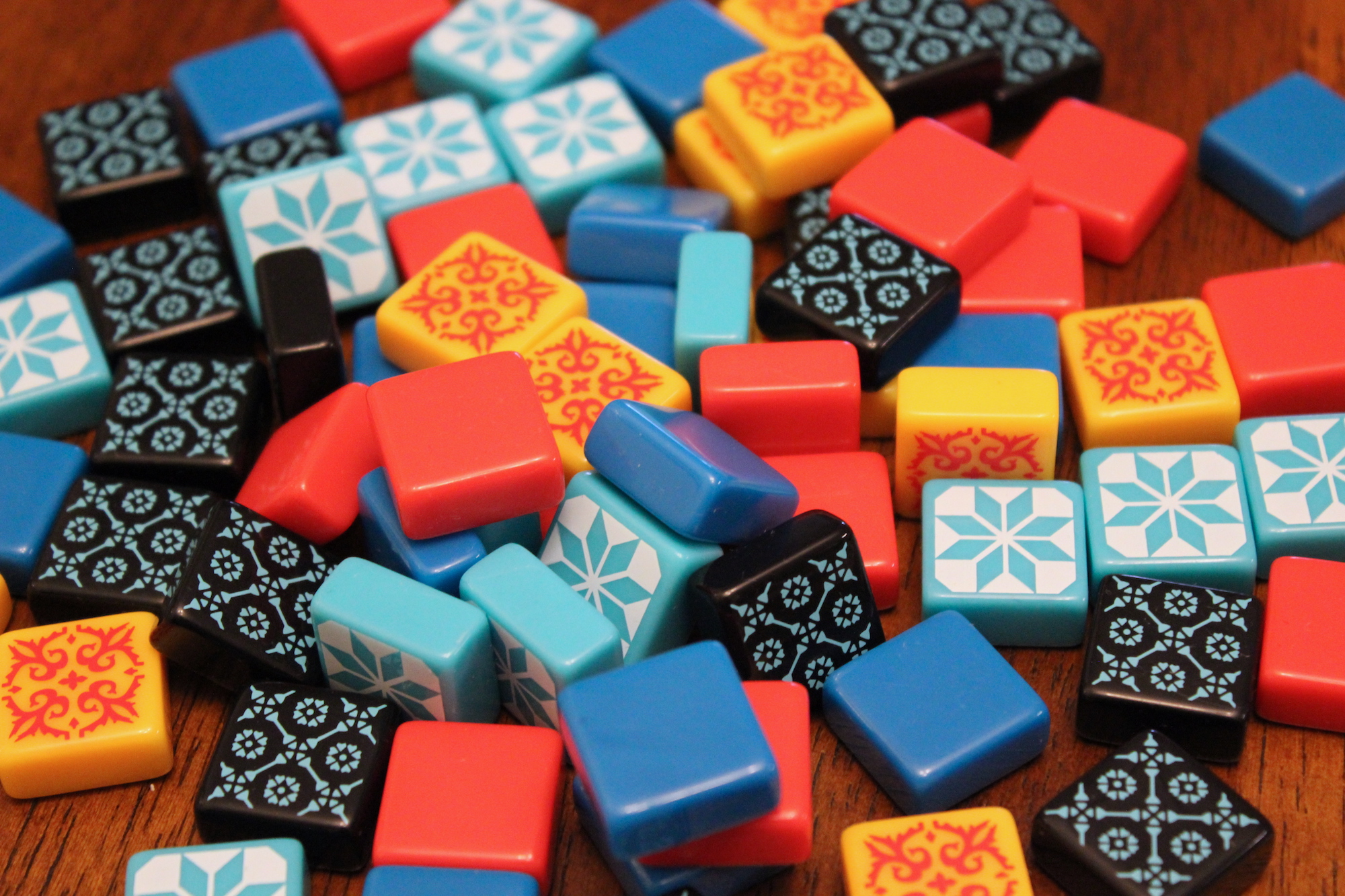Azul is a tile-placing drafting game, where you take tiles from a communal pool in the center of the table (the marketplace, as it is called), and place them on your board, filling up rows of tiles which you will then move onto your beautiful tiled wall, scoring points for collecting adjacent tiles, complete rows and columns, and sets of 5 of each color. The game and its pieces are beautiful, inspired by azulejo, a beautiful form of Portuguese tile art (the tiles in this game look so frickin’ delicious, every time I play I have to remind myself that they are not candy).
When I first played Azul, I didn’t quite understand why the tile pools in the center of the table were called marketplaces. It seemed like a fairly specific word to use for what was just a set of collections of tiles that I could pull from. It makes some sense in the diegesis of the game – the players must procure their tiles from someplace – but if it is a marketplace, why don’t you have to pay for anything? Are these tiles being given out for free?
In my first time playing, I also was confused as to the actual competitiveness of the game. It seemed to me that this game was all but solitaire – there is hardly any player interaction, and most of the game is spent strategizing internally on your own board – how competitive can this game possibly be, besides just trying to one-up another player’s score?
But as I have continued to play this game, I have realized how cutthroat Azul really is. It doesn’t seem like it at first, but after a few rounds through, you start to glance up from your own tile wall (after all, the game is simple enough that there isn’t terribly much to look at) and get curious about other people’s progress. Then, when you have equal choices in the marketplace, you might choose an option that slightly disadvantages your opponent – a small slight, but a slight nonetheless. The next time around, you might pick the second best option for you, but one that truly screws your fellow player over. Or perhaps, you simply blindly choose whatever is best for you, completely unaware of your seething opponent cursing you for dooming their round.
It was then that I suddenly realized why these pools of tiles were the marketplace. The drafting round in Azul is like an aggressive farmer’s market, right at opening – each purchaser and business owner jockeying for position and pushing each other out of the way to buy the best pickings of the week’s harvest for their restaurant. Each player acts in their self interest, as if their very livelihood (in this case, their chances of winning) depend on it. Each player is so self interested that they don’t realize the storm they are collectively brewing – the growing pile of discarded tiles in the middle of the table that will inevitably tank at least one player’s score, but no one is selfless enough to take from that pile.
This realization goes both ways, though. I think the aesthetic presentation of this specific game component as a ‘marketplace’ influenced my experience of the game, subconsciously. I began to see my opponent’s moves as conniving and malicious, as if they were trying to steal what was rightfully mine out from under me. I saw this phase of the game as a competitive, cutthroat, capitalist space where I must rise to the top at any cost, even if it means our mutually assured destruction. I don’t think I’ve played a single game of Azul where someone has not shaken a fist or grumbled angrily at another player for stealing their chance at success. For such a seemingly calm and peaceful game, it’s impressive that such a simple affective choice – calling the collective drafting area the ‘marketplace’ – could have such a profound impact on the play experience of the game.
